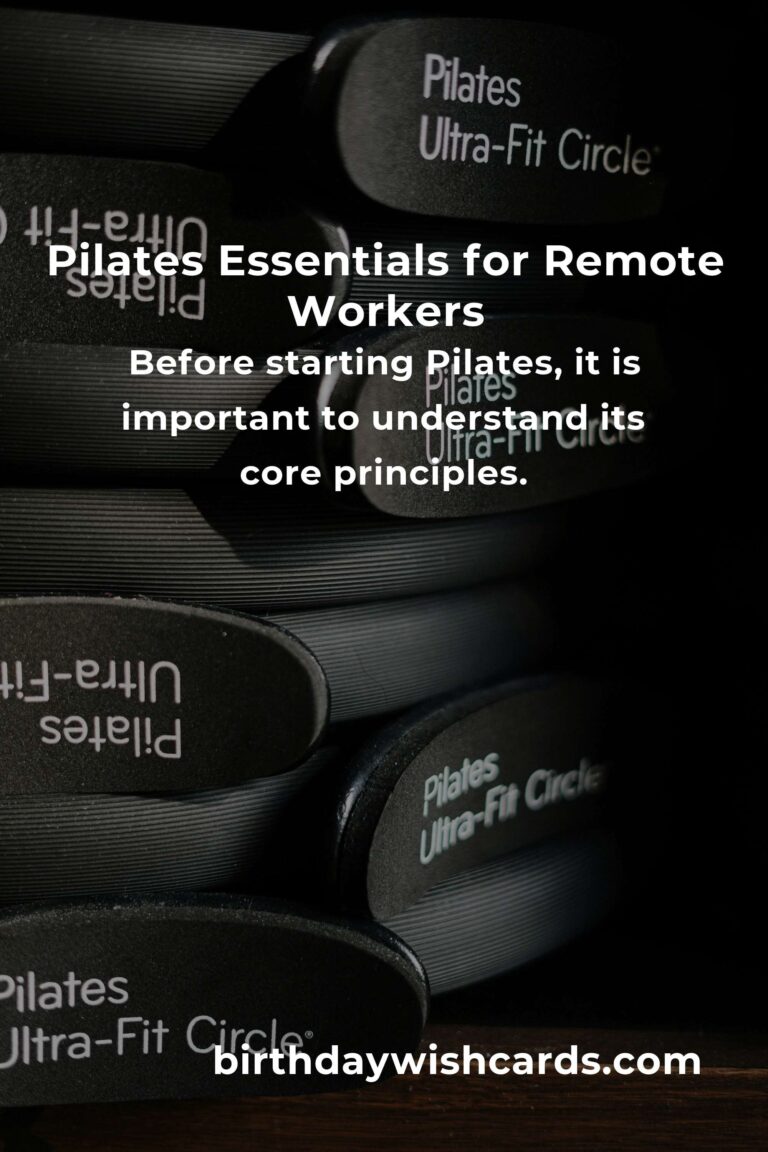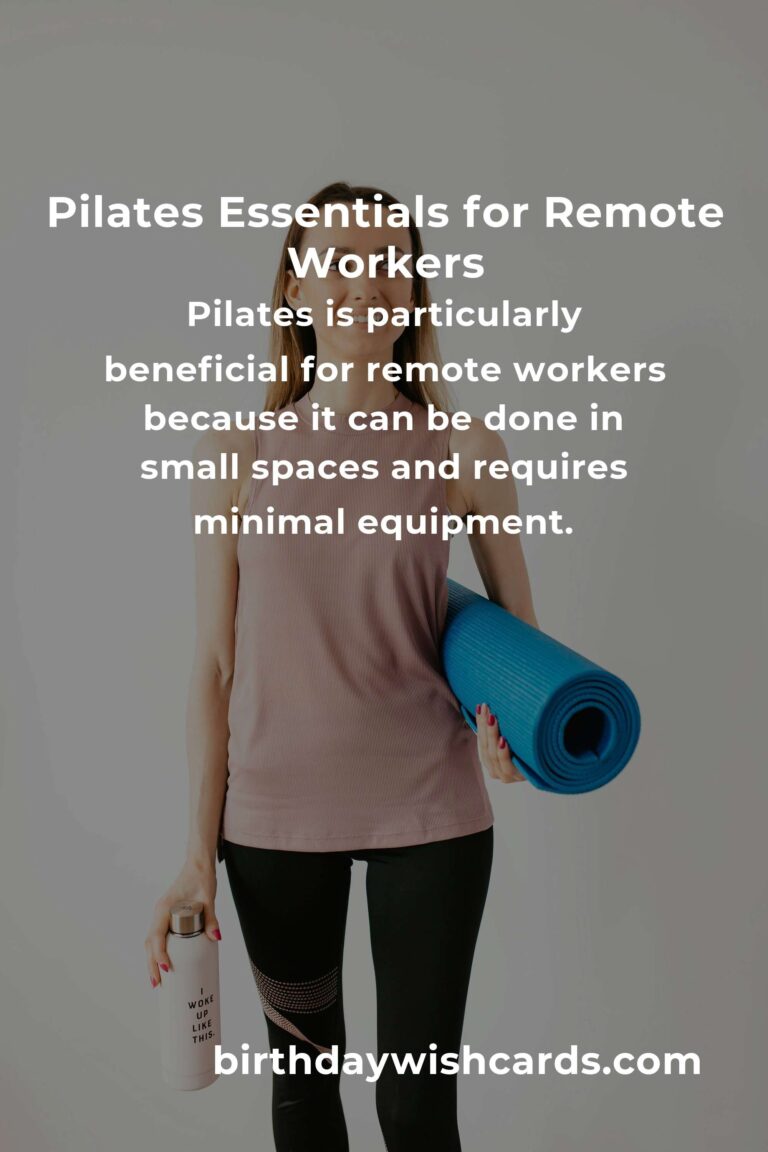
The rise of remote work has transformed the traditional office environment, offering flexibility and convenience but also introducing new challenges such as maintaining physical health and wellness. One effective way to address these challenges is through Pilates, a low-impact exercise system that focuses on strengthening muscles while improving postural alignment and flexibility.
Why Pilates is Ideal for Remote Workers
Pilates is particularly beneficial for remote workers because it can be done in small spaces, requires minimal equipment, and addresses common issues such as back pain and poor posture. By incorporating Pilates into your daily routine, you can enhance your physical health, reduce stress, and boost productivity.
Getting Started with Pilates
Before starting Pilates, it is important to understand its core principles: concentration, control, centering, flow, precision, and breathing. These principles form the foundation of Pilates exercises and help ensure that you perform each movement effectively and safely.
Core Pilates Exercises for Beginners
For those new to Pilates, starting with basic exercises is crucial to building a strong foundation. Some beginner-friendly exercises include:
- The Hundred: A breathing exercise that warms up the body and strengthens the core.
- Roll-Up: A movement that stretches the spine and strengthens the abdominal muscles.
- Leg Circles: An exercise that enhances hip mobility and strengthens the legs.
- Single Leg Stretch: A dynamic movement that focuses on core stability and leg strength.
Setting Up Your Pilates Space at Home
Creating a dedicated space for Pilates in your home is essential for maintaining consistency and motivation. Choose an area with enough room to move freely, and consider investing in a quality mat, resistance bands, and a small Pilates ball to enhance your workouts.
Incorporating Pilates into Your Daily Routine
To reap the benefits of Pilates, consistency is key. Aim to incorporate Pilates into your daily routine by scheduling regular sessions, setting achievable goals, and gradually increasing the intensity of your workouts as you become more comfortable with the exercises.
Tips for Staying Motivated
Staying motivated can be challenging, especially when working from home. To keep your Pilates practice exciting and engaging, consider joining online classes, tracking your progress, and connecting with other Pilates enthusiasts online.
The Benefits of Pilates for Mental Health
In addition to physical benefits, Pilates also offers numerous mental health benefits. The focus on controlled breathing and mindful movement can help reduce stress, improve concentration, and enhance overall well-being.
Conclusion
Pilates is an excellent exercise option for remote workers looking to improve their physical and mental health. By understanding the basics and incorporating Pilates into your daily routine, you can enjoy the many benefits this exercise system has to offer.
The rise of remote work has transformed the traditional office environment.
Pilates is particularly beneficial for remote workers because it can be done in small spaces and requires minimal equipment.
Before starting Pilates, it is important to understand its core principles.
Creating a dedicated space for Pilates in your home is essential for maintaining consistency.
To reap the benefits of Pilates, consistency is key.
In addition to physical benefits, Pilates also offers numerous mental health benefits.
#Pilates #RemoteWork #Wellness #Fitness #Health

